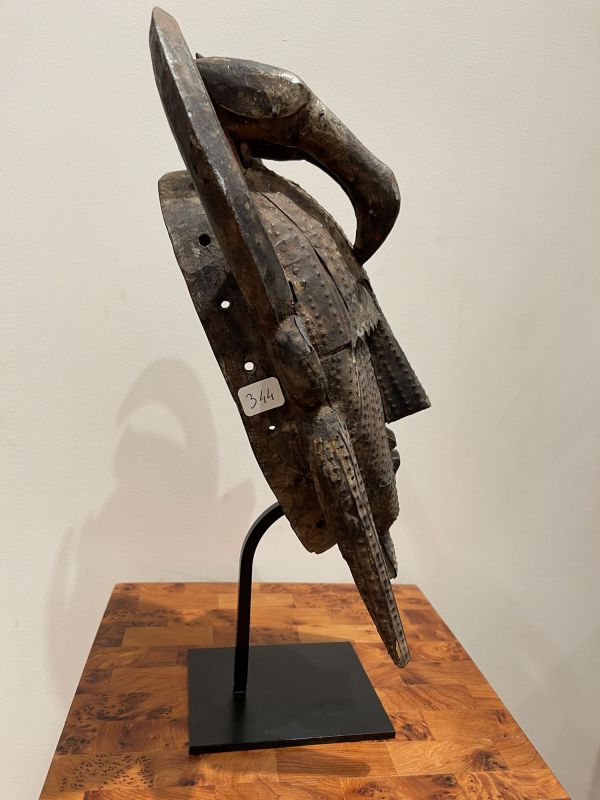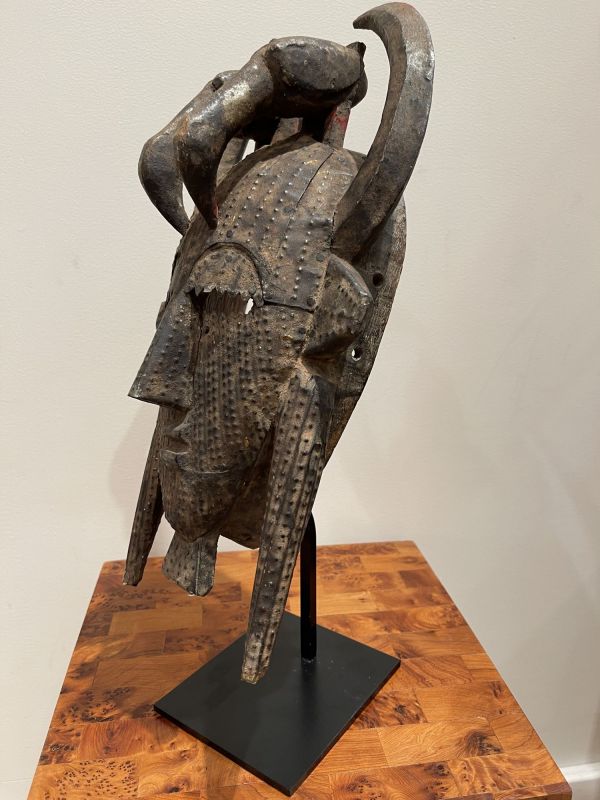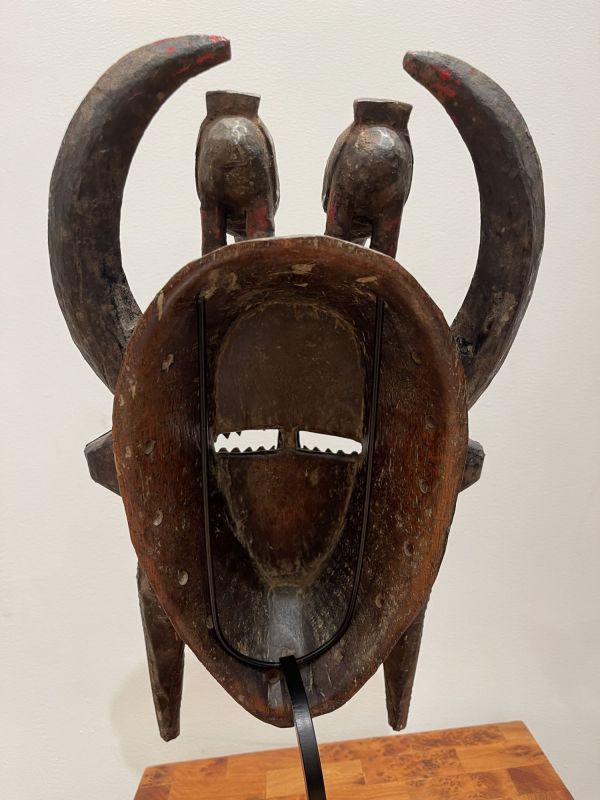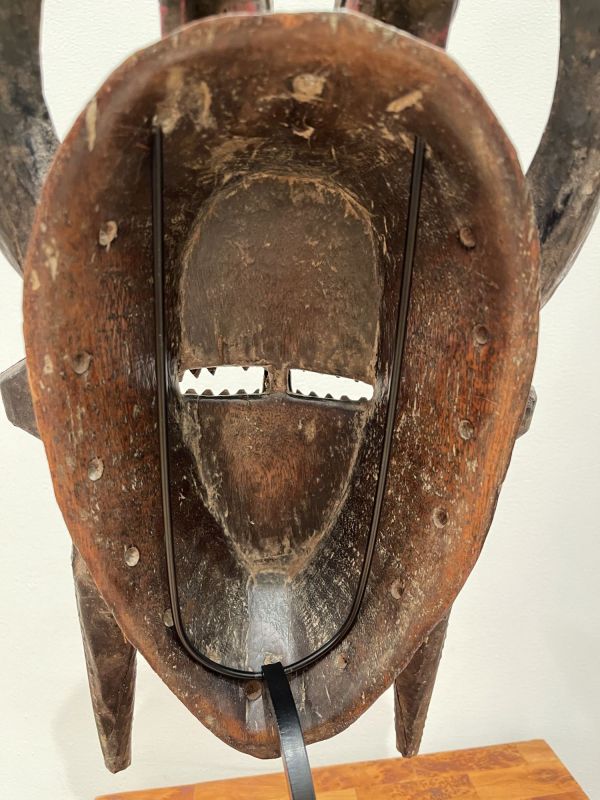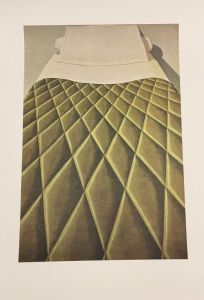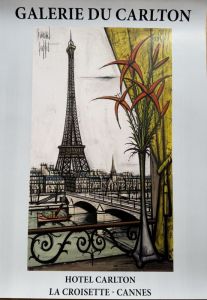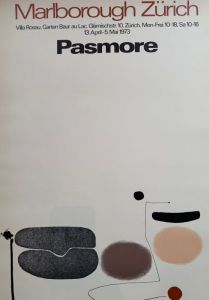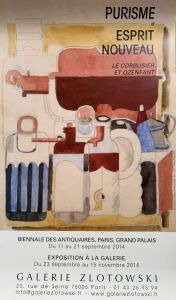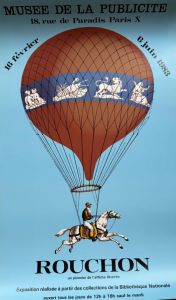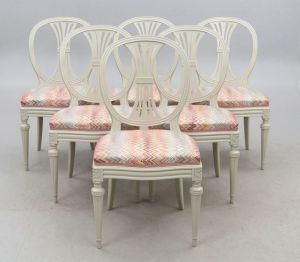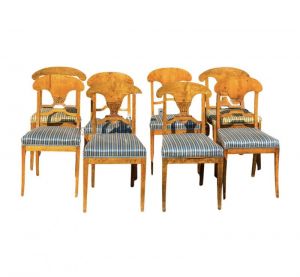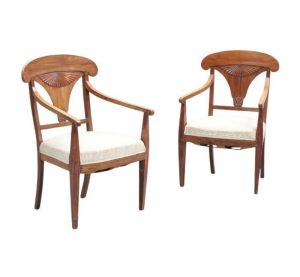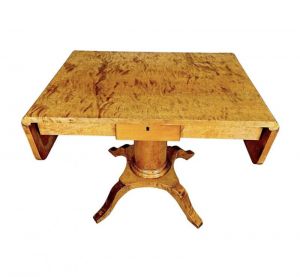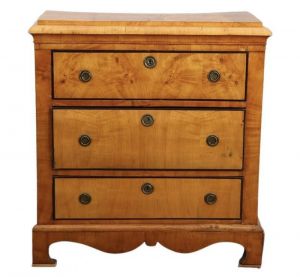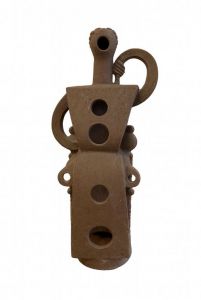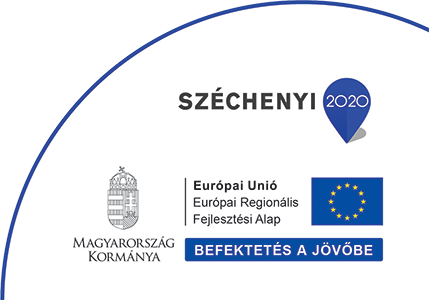Kpélié Mask, Sénoufo population, Ivory Coast, 1950
€1.400,00
The Senoufo people inhabit areas spanning southern Mali, southern Burkina Faso, and northern Côte d'Ivoire. They are organized around the poro, a male initiation system where young boys learn their social and religious roles in sacred woods, away from the village. Initiation ceremonies can last up to twenty-one years, and ritual objects are carved by specialized artisans.
The Kpélié mask is used during initiation rites, funerals, and harvest ceremonies. Interpretations of these masks vary. Some researchers believe they evoke fear during initiations, while others see them as a spiritual link, symbolizing the precariousness of the human condition. The masks may also feature metallic elements, a characteristic shared with the masks of the Bamana and Marka peoples.
Wood covered with copper plates
Circa 1950
Dimensions : H : 36.5 cm L : 14.5 cm/H : 14.17 in L : 5.51 in
Quantity:
1
Period:
1950-1959
Place of origin:
Côte d'Ivoire
Style:
Folk Art
Dimensions (cm):
36.5H x 14.5W x 10D
Dimensions (inch):
14,37H x 5,71W x 3,94D
Creator / Artist:
Unknown
Material:
Wood, Copper
Condition:
Good;
Inventory ID:
344
Payment options:
Credit card,
Debit card
Debit card
Payment note:
Visa & Mastercard accepted at the gallery
Shipping options:
International - YES
Shipping regions:
Worldwide
Avant-Garde Gallery

Latest items
Published in Furniture, Lighting, Decorative Objects and Fine Art categories


